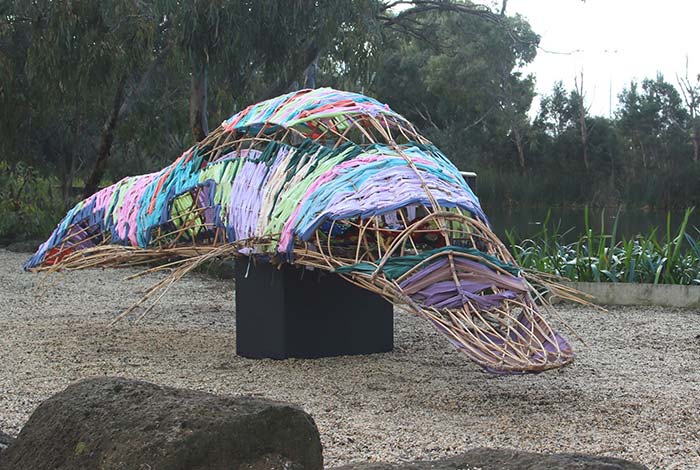In THE JOURNEY OF MAPIYAL, Indianna Hunt shared the Wemba Wemba story of mapiyal (platypus in Wemba Wemba language) told by her mum Elder Kerry Clarke. This story provides foundation for the project design. Through multiple layers of engagement and participation at each stage, RMIT students and staff co-created the artworks. The artistic team then shaped the contributions into two high-quality, site-specific artworks, exceeding expectations in the projects design and delivery:
- The Burrow immersive multimedia installation at RMIT City Campus between B010 & B012. Indianna collaborated with RMIT Masters student and Sound Artist Israel Carter (Wemba Wemba, Ngarrindjeri) and VFX Animation Director and RMIT Alumni John Power. The surround sound design includes Elder Kerry Clarke telling the story of Mapiyal, and participants voices acknowledging and celebrating where they are from. Animation of Indianna’s watercolour artwork was inhabited by swimming platypus designs received online from participants exploring their own identities.
- Mapiyal Sculpture, a 4.5m cane platypus sits by the lake at Bundoora West campus. Indianna was supported by professional cane and bamboo artist Mahony Kiely, and student assistants, to construct mapiyal. Weekly workshops invited participants to write pledges towards solidarity with Aboriginal and Torres Strait Islander communities on coloured fabric, to be attached to mapiyal. “Consider where you are along your journey towards solidarity. What would your promise be? What could you do to be kinder in your everyday life or make sure everyone is included?” Ragrugs woven by Indigenous students in the colours of the Aboriginal and Torres Strait Island flags form mapiyal’s heart, representing that “Aboriginal and Torres Strait Islander people are the heart of RMIT and this country” (Indianna Hunt).









